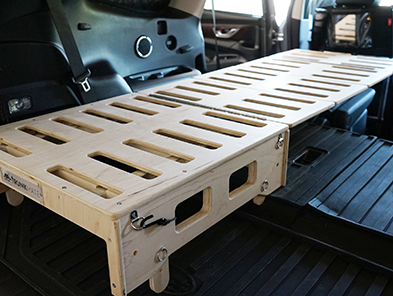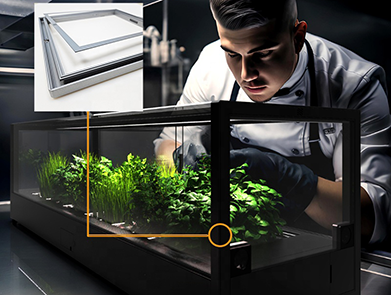In the export process of aluminum profiles, packaging is a critical step in ensuring that the profiles are protected from damage during transportation and maintain their quality. Depending on different transportation needs, customer requirements, and product characteristics, there are various packaging methods used for aluminum profiles. The common export packaging methods can be divided into the following: Full Container Load, Wooden Box Packaging, Wooden Pallet Packaging, and Single Unit Packaging.
1. Full Container Load (FCL)
Full Container Load (FCL) packaging is a commonly used method for aluminum profile exports, especially for large volumes of aluminum profiles. In this packaging method, the profiles are typically loaded directly into containers in bulk without individual packaging. The profiles are separated and protected using suitable filling materials to minimize damage from friction or impact. FCL packaging is ideal for bulk export needs, offering higher transportation efficiency and cost-effectiveness.
2. Wooden Box Packaging
Wooden box packaging is used for aluminum profiles that require additional protection, particularly high-end profiles or fragile products. Each profile is individually packed and placed inside a sturdy wooden box. This method effectively prevents the profiles from external impacts and compression during transportation. Wooden box packaging provides high protection and ensures that aluminum profiles remain intact during long-distance transportation. It is commonly used for long-distance shipments and high-value aluminum profiles.
3. Wooden Pallet Packaging
Wooden pallet packaging is a common method used for large shipments. Aluminum profiles are placed on wooden pallets and secured using packing straps or stretch bands to ensure stability during transportation. Wooden pallets make it easier
to load and unload containers, and forklifts can be used for handling. This method is widely used in the export of bulk aluminum profiles and other industrial materials. Wooden pallet packaging is often combined with FCL and wooden box packaging.
4. Single Unit Packaging
Single unit packaging is a personalized packaging method for each aluminum profile, typically used for profiles with higher packaging requirements. Each profile is individually packed using the following methods to ensure its safety during transportation:
1.Non-woven Fabric Separation: Each profile is separated using non-woven fabric to prevent surface scratches or friction with other profiles. The softness of the fabric helps reduce surface damage.
2.Plastic Bag: Each profile is individually wrapped in a plastic bag to prevent moisture, dust, and other external factors from affecting the profile.
3.Protective Film: A protective film is often applied to the surface of the profiles to prevent scratches, contamination, and other damage during transportation. The film helps maintain the appearance and quality of the profiles.
4.Kraft Paper: Some profiles are also wrapped with kraft paper, which provides additional protection while reducing friction damage during transport.
Single unit packaging is particularly suitable for profiles that need to be stored for a long time or have high aesthetic demands. It provides a higher level of protection, ensuring the safety of each profile during transportation.
Conclusion
The choice of packaging method for aluminum profiles depends on the product characteristics, transportation distance, and customer requirements. Whether it is Full Container Load, Wooden Box Packaging, Wooden Pallet Packaging, or Single Unit Packaging, each method offers unique advantages. By selecting the appropriate packaging solution, aluminum profiles can be safely transported, minimizing the risk of damage and ensuring customer satisfaction.
Choosing the right packaging method not only improves transportation efficiency but also enhances customer satisfaction, fostering long-term international cooperation.


